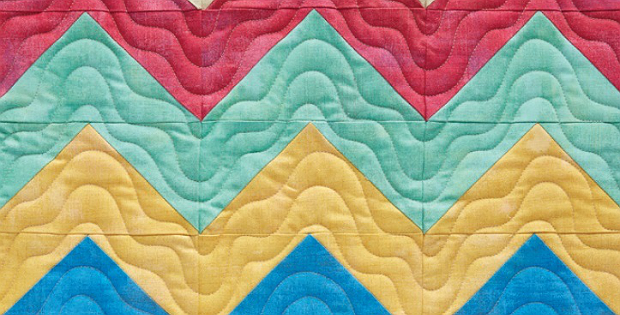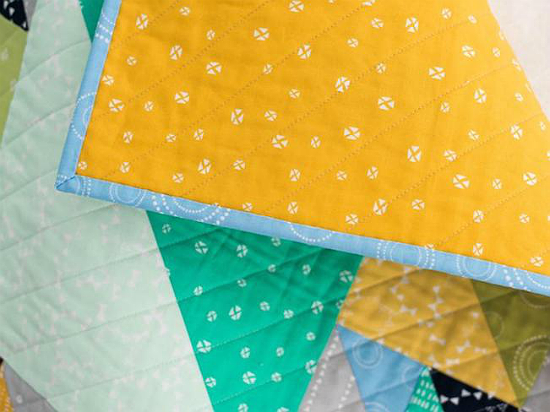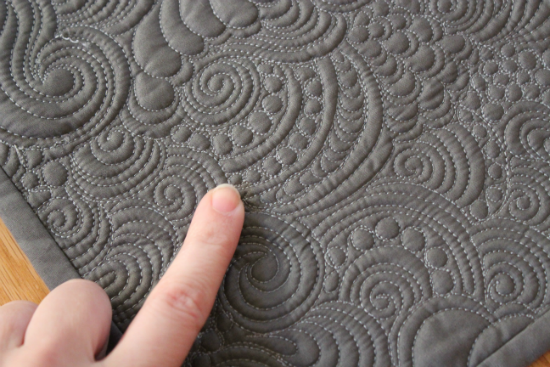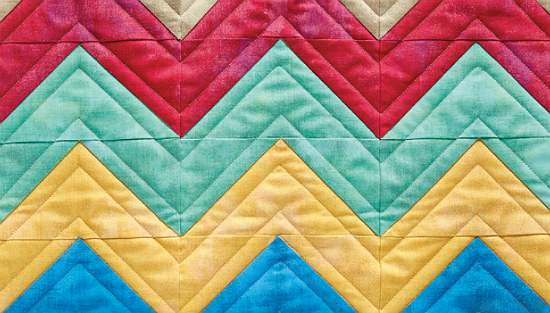Quilting Density Can Make or Break a Quilt

Consider These Points When Deciding on a Quilting Design!
Have you ever finished up a quilt and been disappointed in how it feels and drapes? There’s a good chance that the density of the quilting was the problem.
Quilting density, or how close together quilting lines are on a quilt, can have a big impact on the finished project. While we tend to love the beauty of intricately and densely quilted show quilts, dense quilting doesn’t always translate well to a quilt we want to use every day.
For example, dense quilting can make a quilt stiff, while quilting lines that are more widely spaced create more plushness and allow a quilt to drape more nicely. Wider spacing can also produce a warmer quilt, as the layers aren’t compacted as much over the surface of the quilt.
On the other hand, durability is also a factor. Dense quilting produces a more durable quilt, as the layers can’t shift as much. Consequently, bed and baby quilts will be hold up better to frequent washings if they are more densely quilted.
The batting is also a factor. Every package of batting will specify the maximum number of inches it can withstand between quilting lines. If you prefer plush quilts, the tendency may be to go with the bare minimum amount of quilting. However, closer quilting will produce a longer-lived quilt.
An example of dense quilting. From Quilting is My Therapy.
As with many things, quilting density tends to be a trade off among several variables. They’re all discussed in an excellent article by Rachel Hauser. While it refers specifically to straight line quilting, the same principles apply to free motion quilting.
If you’re still confused about what to choose for your quilt, a second article, by Felicia from Felicia’s World, presents an important point to consider. Her main criteria is the purpose for the quilt.
“I don’t know why this wasn’t intuitive to me, but now, when I start a project, the first question I ask myself is:
“What is this quilt for?”
Is it for hanging on the wall, entering in a show, or a model for a new pattern? In which case, feel free to quilt it so densely it won’t even fold if you try. Have at it!
However, if you want your niece’s new baby to be comfortably bundled up, or take naps on the sofa with your new creation … feel free to go light on the quilting.”
Read the rest of Felicia’s insightful article by following the link below.
While the purpose of the quilt should be the defining factor, you can push the boundaries a bit. Dawn Cavanaugh, in an article for APQS, discusses how various batting types respond to dense quilting. Some will be snugglier than others. Plus, it’s also important to consider what the most important design elements are in a particular quilt – the piecing and/or applique, or the quilting.
Between these three articles you’ll surely find just what you need to know to decide on the quilting density for your next quilt. Every quilt is different, so let the quilt and it’s purpose and overall design guide you when selecting the quilting for it.
Image Source: the images with the zig zag piecing are from APQS.














